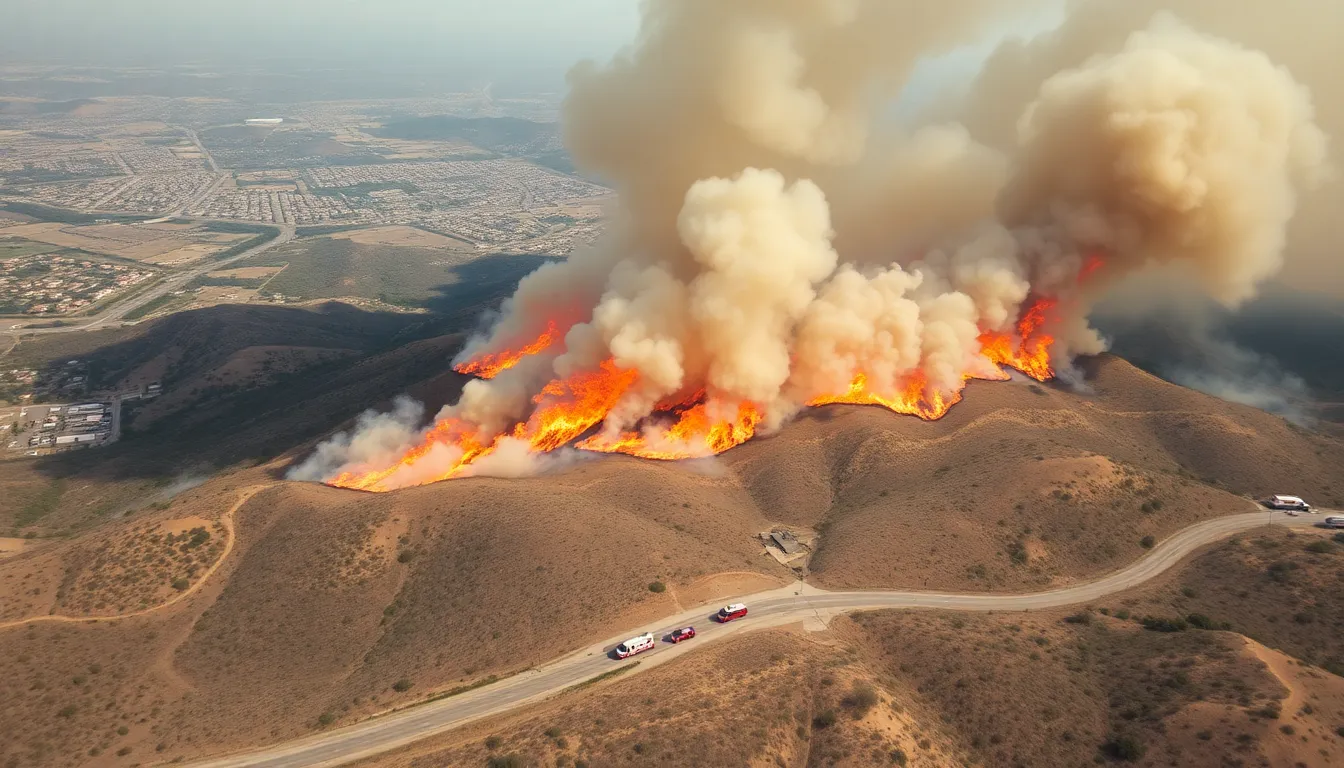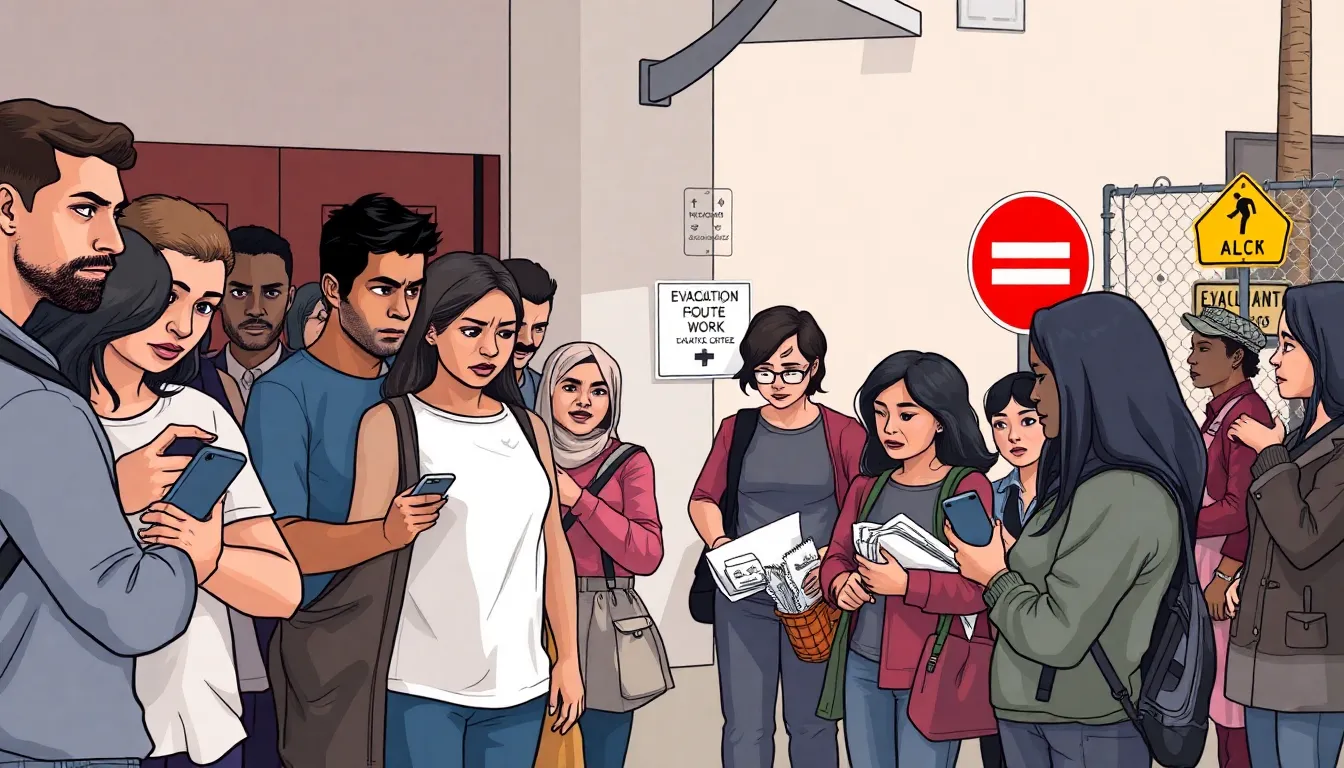When the skies turn gray and the winds start howling, Los Angeles residents know it’s time to pay attention. Evacuation orders can feel like a scene straight out of a disaster movie, but they’re very real and often necessary. Whether it’s wildfires, floods, or other emergencies, being informed can mean the difference between a cozy Netflix night and a frantic scramble for safety.
Table of Contents
ToggleOverview of Current Evacuation Orders Los Angeles
Evacuation orders across Los Angeles respond to immediate threats from natural disasters. Various areas face orders due to wildfires, floods, and mudslides. Current orders apply to neighborhoods in the San Fernando Valley, parts of the San Gabriel Mountains, and the Santa Monica Mountains.
Residents in affected zones must evacuate promptly. The Los Angeles Fire Department (LAFD) issues these orders based on risk assessments. Authorities monitor conditions closely to ensure public safety.
Designated evacuation routes help facilitate safe departure. These routes include major thoroughfares and highways, enabling efficient traffic flow. Local shelters provide temporary housing for evacuees and their pets.
Communities receive updates through local news, social media, and official channels. Following these updates ensures residents remain informed about changing conditions. Notifications may include the status of evacuation orders and re-entry notices when it’s safe to return.
Preparedness remains crucial in managing an effective response. Residents should create emergency plans that specify departure routes and communication strategies. Gathering essential items, like medications and important documents, speeds up the evacuation process.
Voluntary evacuation alerts may precede mandatory orders. Local agencies encourage residents to take these warnings seriously, as conditions can deteriorate rapidly. Prioritizing safety and heeding evacuation recommendations protect lives in critical situations.
Reasons for Evacuation Orders

Evacuation orders in Los Angeles stem from several critical factors, emphasizing the urgency of public safety.
Natural Disasters
Natural disasters significantly contribute to the issuance of evacuation orders. Wildfires frequently pose immediate threats, especially in vulnerable areas like the San Fernando Valley and the Santa Monica Mountains. Flood risks, particularly during heavy rains, can lead to rapid water accumulation, endangering lives and property. Earthquakes can also cause structural damage, warranting quick evacuations to avoid injury. Neighborhoods affected by these disasters receive timely notifications from the Los Angeles Fire Department, which assesses risk levels and designates safe evacuation routes.
Public Safety Concerns
Public safety remains a top priority during evacuation scenarios. Authorities often issue orders to prevent injuries from hazardous conditions like smoke inhalation or flooding. Residents in affected zones must evacuate promptly to avoid chaos and ensure access to emergency services. In high-risk areas, the potential for traffic congestion increases, highlighting the importance of designated evacuation routes. Communication plays a crucial role, as local news and social media updates inform residents of changing circumstances. Evacuation orders protect lives, prioritize health, and facilitate a safe response to emergencies.
Impact of the Current Evacuation Orders
Current evacuation orders significantly affect residents in specific areas of Los Angeles. Authorities issued these orders to prioritize safety amid ongoing threats from natural disasters.
Affected Areas
Affected neighborhoods include the San Fernando Valley, portions of the San Gabriel Mountains, and the Santa Monica Mountains. Residents living in these regions face immediate danger from wildfires and floods. Proximity to these hazards prompts swift action from the Los Angeles Fire Department, ensuring timely notifications for those at risk. Evacuation zones are clearly defined, enabling authorities to communicate effectively with the public.
Community Response
Community response demonstrates resilience and solidarity in facing these emergencies. Local organizations and volunteers actively assist evacuees by establishing temporary shelters and offering essential resources. Residents share information via social media, ensuring that friends and family remain informed about evolving conditions. Many people take it upon themselves to spread awareness about the urgency of compliance with evacuation orders. This collective effort emphasizes the importance of remaining vigilant during such critical situations.
Resources for Residents
Residents of Los Angeles can access vital resources during evacuation orders to ensure safety and support.
Emergency Services
Emergency services stand ready to assist residents impacted by evacuation orders. The Los Angeles Fire Department provides real-time updates on evacuation statuses. Additionally, local police departments facilitate safe evacuations along designated routes. Community members can reach the 211 helpline for essential services, including medical assistance and mental health support. Emergency services also coordinate with volunteers to manage shelters and distribute supplies.
Housing and Shelter Options
Housing and shelter options are critical for residents forced to evacuate. Designated shelters are set up throughout neighborhoods with evacuation orders. These facilities often accommodate not only people but also pets, ensuring families stay together. Local organizations collaborate with city officials to provide food, water, and basic necessities at these sites. Residents should also consider temporary housing arrangements with friends or family outside evacuation zones. Community centers may serve as additional resources for information on available housing options during emergencies.
Staying informed and prepared is crucial for residents facing evacuation orders in Los Angeles. The urgency of these situations cannot be overstated as natural disasters pose immediate threats to safety. By adhering to evacuation guidelines and utilizing available resources, individuals can protect themselves and their loved ones.
Community resilience shines through during these challenging times as neighbors support one another and share vital information. Effective communication from local authorities ensures that residents receive timely updates, helping them make informed decisions. Prioritizing safety and preparedness remains the best defense against the unpredictability of emergencies.





